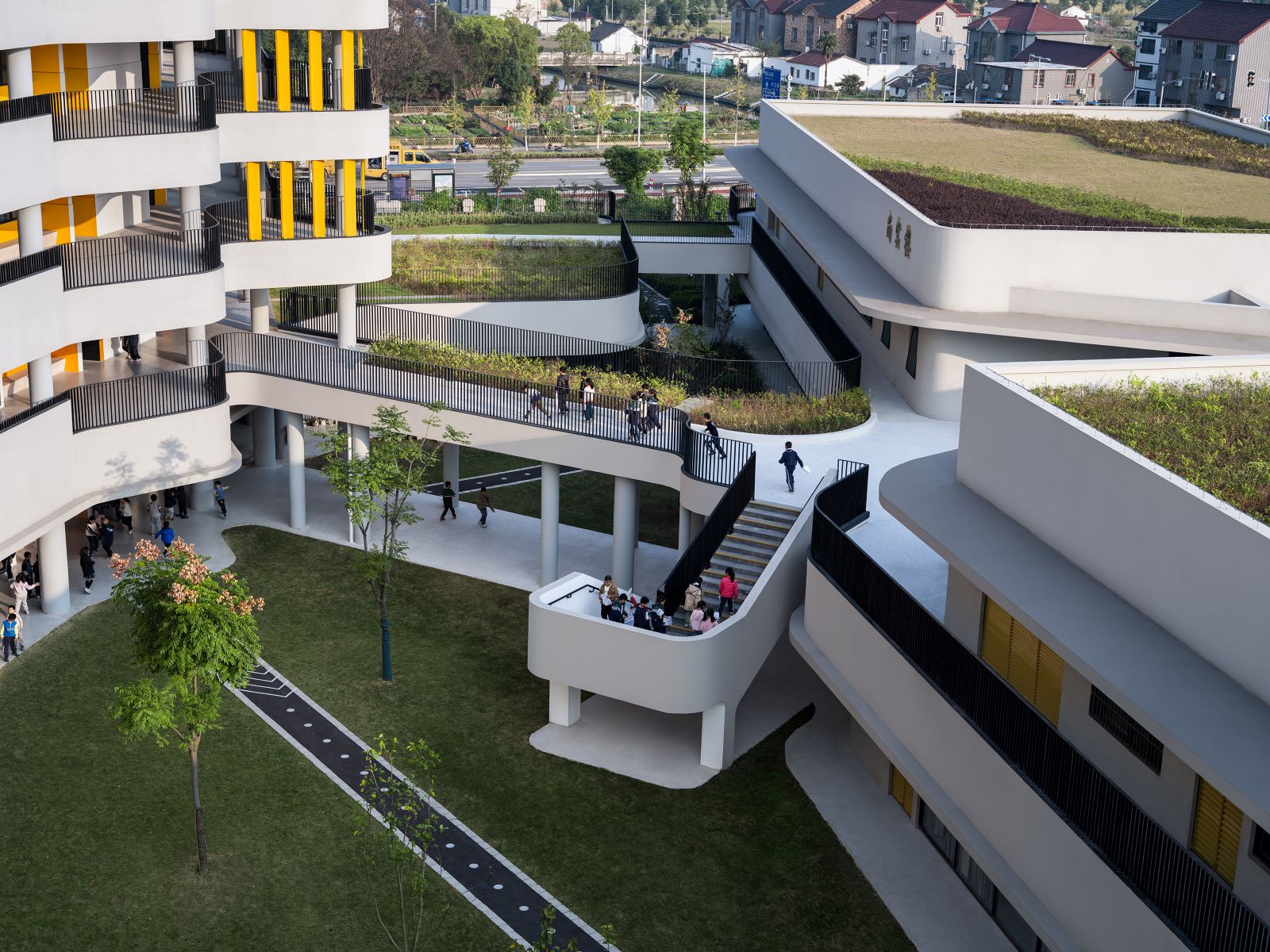
Esbjerg’s new Maritime Center, also called “The Lantern”, is designed to put the community first. Developed by Snøhetta and WERK Architects following a design competition in 2019, the center provides a maritime social hub and architectural landmark for the seaport town on the Danish west coast. Its circular, open design invites visitors in from every angle, creating an accessible and inclusive building. The upper level of the building houses various clubs for rowing, kayaking, sailing, diving, and triathlon, as well as common areas, an educational center, and training facilities. One can find boat storage and workshop space on the lower level, directly connected to the sea by a bridge. Large windows throughout the building’s façade give plenty of daylight and visibility inwards, connecting the center to its surroundings. A warm glow shines through the windows at night, lighting the center like a lantern.
“Our vision is to create a building where the rational and the poetic meet in a symbiosis. A symbiosis between the movements of the sea, the movement of light and the low-practical and everyday. A symbiosis between spatial experiences and practicality. A symbiosis between the fine and the raw, the social and the sporting.”
Thomas Kock, Creative Director at WERK



The building design is inspired by the geometry and craftmanship of boats, paying homage to the maritime tradition and its significance in the port of Esbjerg. Round-shaped holes between the terrace and the boat storage and preparation area bring daylight down to the ground floor’s core and create a visual and social vertical link. The façade has a rhythm and repetition inspired by wooden boat construction, both outside and inside. It also reflects the water’s energy with the pace and horizontal rippling effect experienced when throwing a stone in the water. The changes in the angle of the panels give varying shadows inspired by the shapes of kayaks. The wooden rhythm continues on the roof, where solar panels are integrated with a belt around the top edge.


With a vision to create a space that unites the poetic with the practical, Maritime Center aims to find a balance between the mesmerizing and never-ending movements of the sea and practical everyday chores—a symbiosis between the beautiful and the raw, the elegant and the robust. The robustness of the center is evident not just in the buildings’ ability to facilitate activities but also in how it creates shelter from strong winds. The building is planned for high water in case the water exceeds the new surrounding dam. Therefore, the structure up to the first floor is made of concrete and poured in one go. The wooden façade is designed to withstand harsh weather conditions, while the building has areas where visitors can find shelter. One such area, and the heart of the project, is a lifted, publicly accessible terrace that gathers all the different activities of the building. Connected to the first floor, the terrace is accessible from the two main stairs, creating an amphitheatre. Visitors can enjoy the view from the first floor on smaller terraces along these two stairs.
The Maritime Center is a building that reflects the forces of the sea and creates a connection between the city and the port. Like a lighthouse, it should be located at the far end of the sea and quite literally light up.





Project Details:
Name: Esbjerg Maritime Center
Location: Esbjerg, Denmark
Status: Completed (2023)
Area: 2800 sqm (Approx. 4000 sqm incl. terrace and boat storage)
Typology: Educational and Research
Design Firm: Snøhetta and WERK Architects
Photographs: ©wichmann+bendtsen photography






